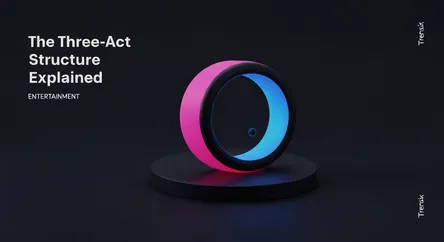Entertainment
The Three-Act Structure Explained

Discover the Three-Act Structure, the classic storytelling model that shapes most films. Learn how it creates compelling narratives from setup to resolution.
What Is It?
The Three-Act Structure is a foundational model for narrative storytelling that divides a plot into three parts: Setup (Act I), Confrontation (Act II), and Resolution (Act III). Act I introduces the characters, their world, and the inciting incident that kicks off the story. Act II, the longest section, develops the central conflict through rising action and obstacles. Finally, Act III pushes the story to its climax where the conflict is resolved, leading to a conclusion. It's the invisible skeleton that provides pacing and an emotional arc for countless successful films and novels.
Why Is It Trending?
This structure is perpetually relevant in showbiz as a reliable blueprint for creating engaging narratives. Amidst the high demand for content from streaming services, writers rely on this proven framework to craft screenplays that connect with broad audiences. Its principles are constantly dissected in screenwriting courses, online masterclasses, and video essays analyzing hit films, keeping it a core topic for aspiring and professional storytellers alike.
How Does It Affect People?
For audiences, the Three-Act Structure creates a familiar and emotionally satisfying experience. It methodically builds suspense, establishes stakes, and delivers a cathartic payoff, making stories feel coherent and complete. This familiar rhythm allows viewers to easily follow a protagonist's journey and become invested in their struggle. While sometimes criticized as formulaic, its effective use is often what elevates a story, making it impactful and memorable for the audience.